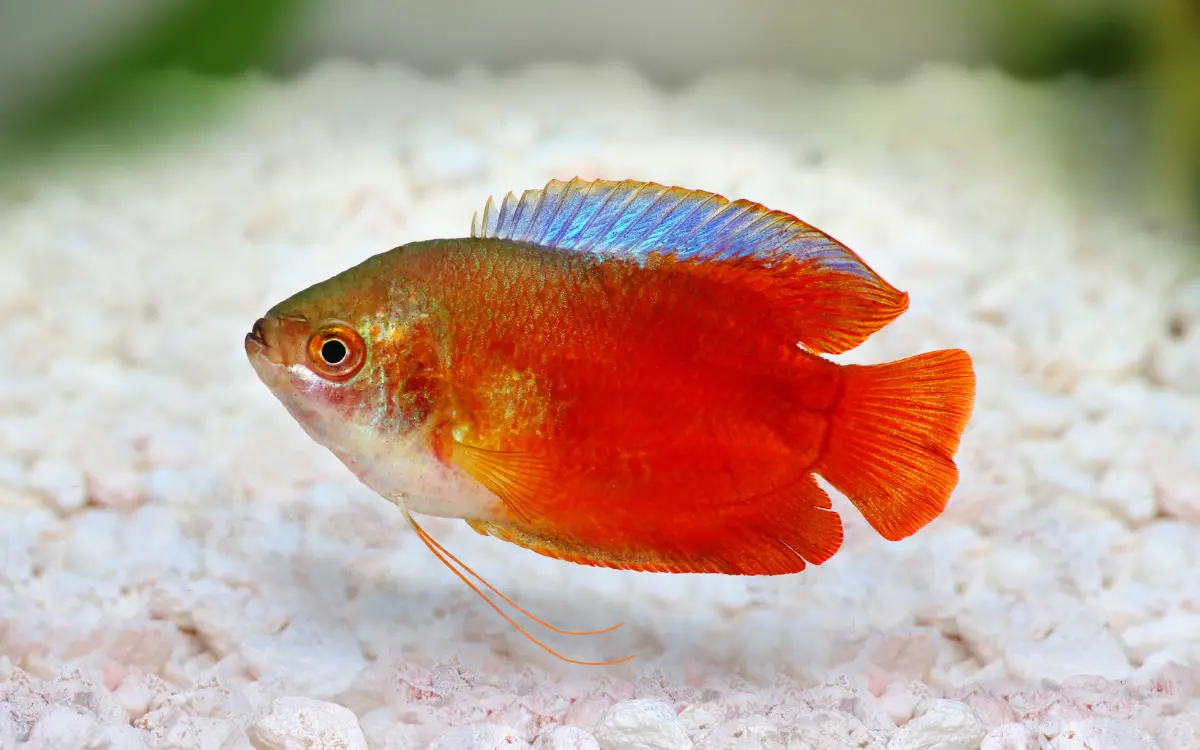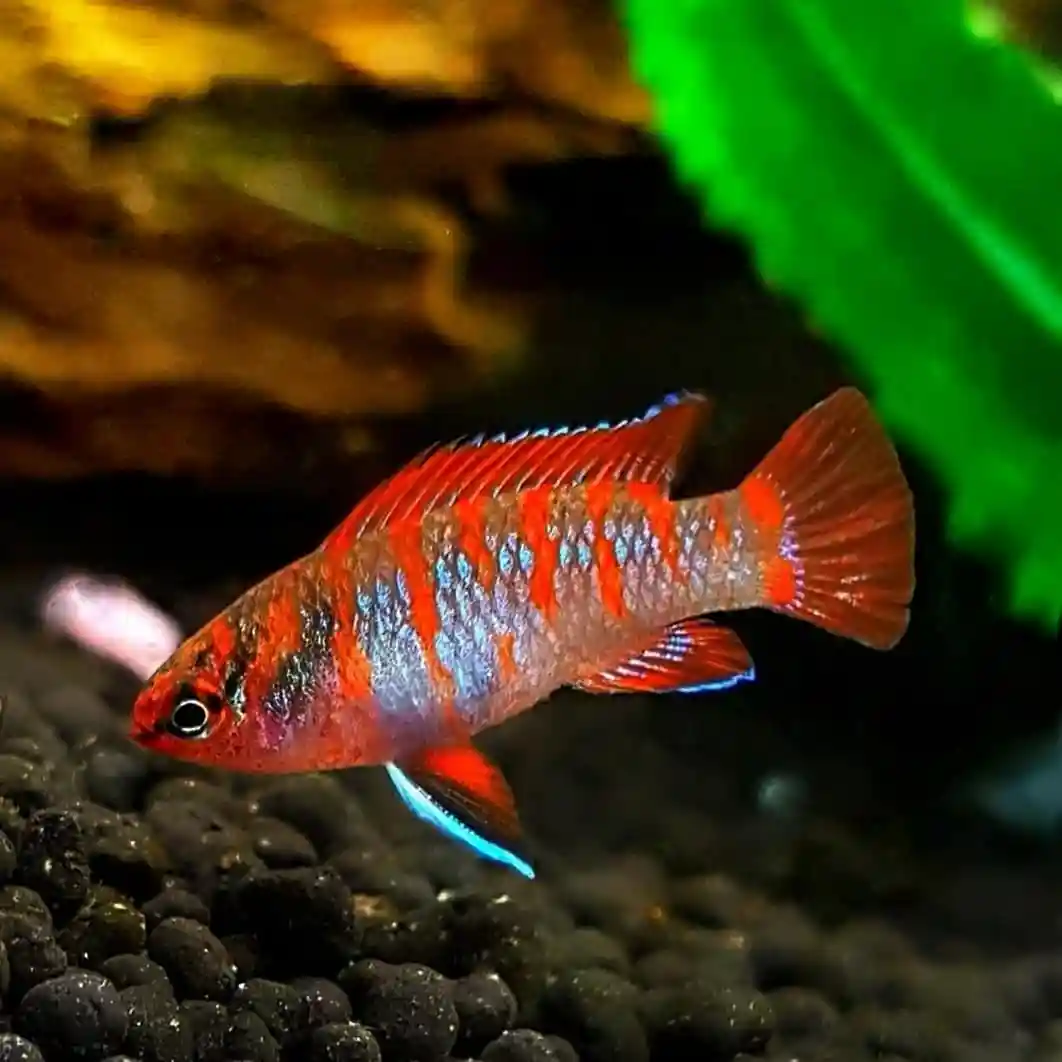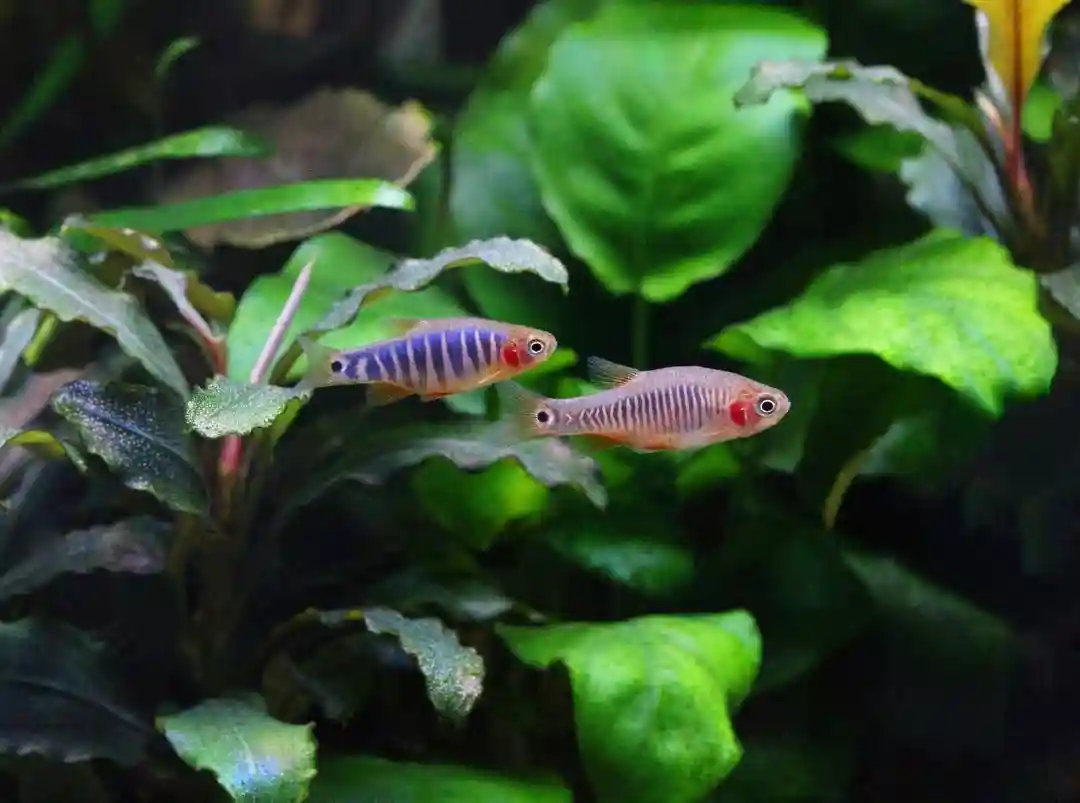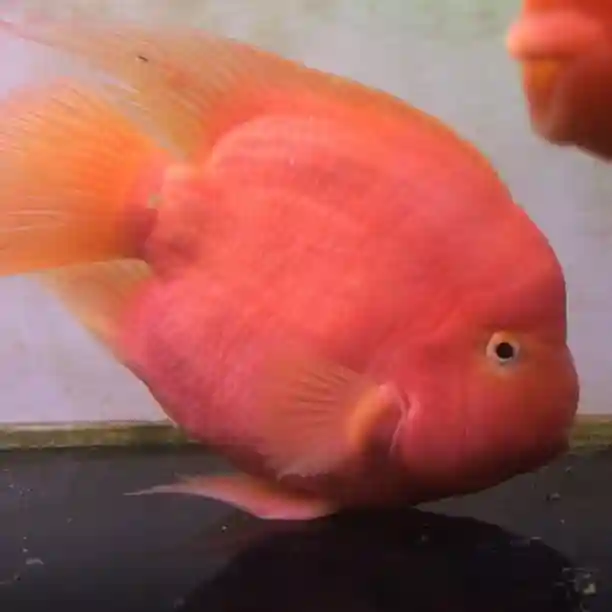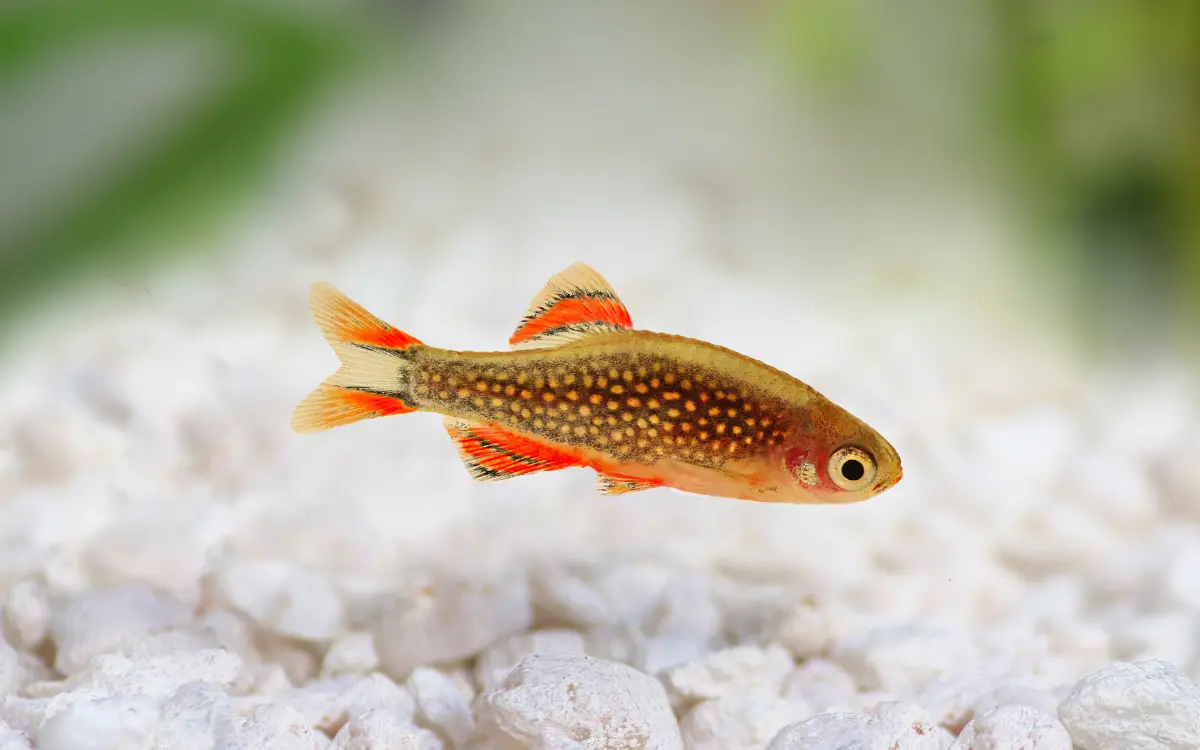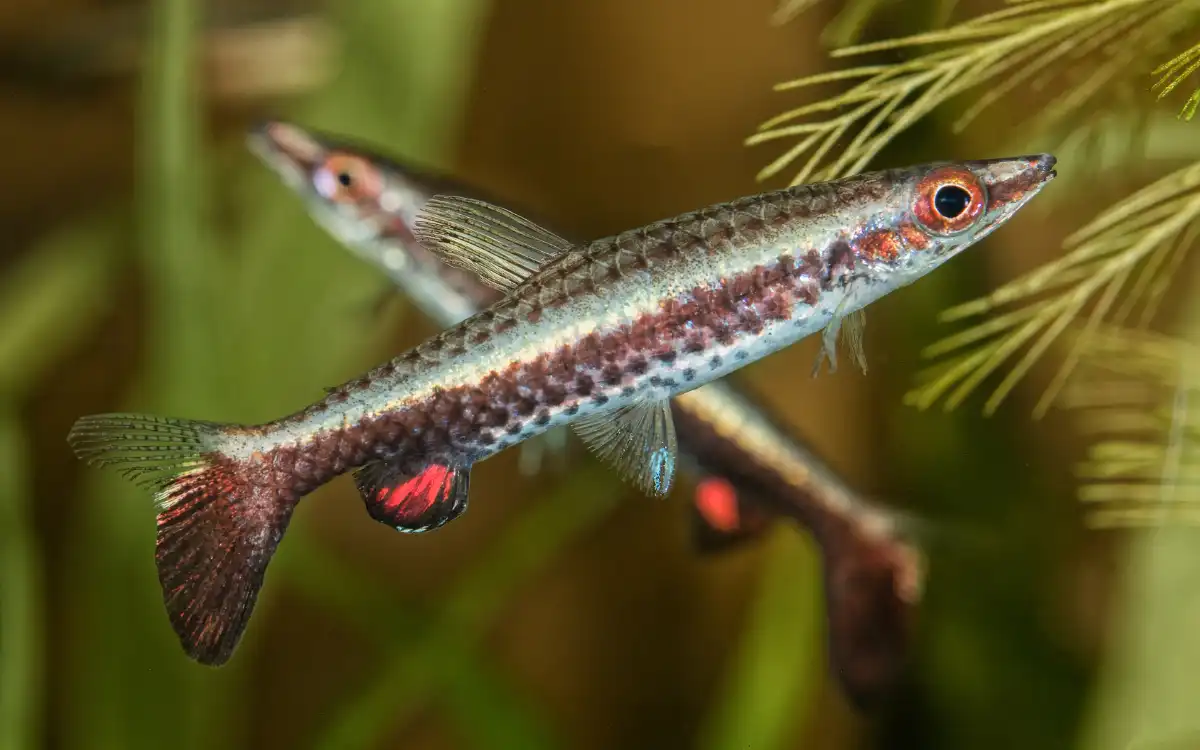Rainbow Shark Care: Tank Size, Behavior, Diet, Tank Mates & Breeding
The Rainbow Shark is one of the most eye-catching freshwater fish in the aquarium hobby. With its sleek black body and vibrant red fins, it’s easy to see why so many hobbyists are drawn to them. But don’t let the name fool you this “shark” isn’t always peaceful. Rainbow Sharks are semi-aggressive and territorial, so proper care, space, and planning are essential.
In this guide, you’ll learn how to care for Rainbow Sharks from ideal tank setup and water conditions to tank mate compatibility, feeding, and breeding tips.
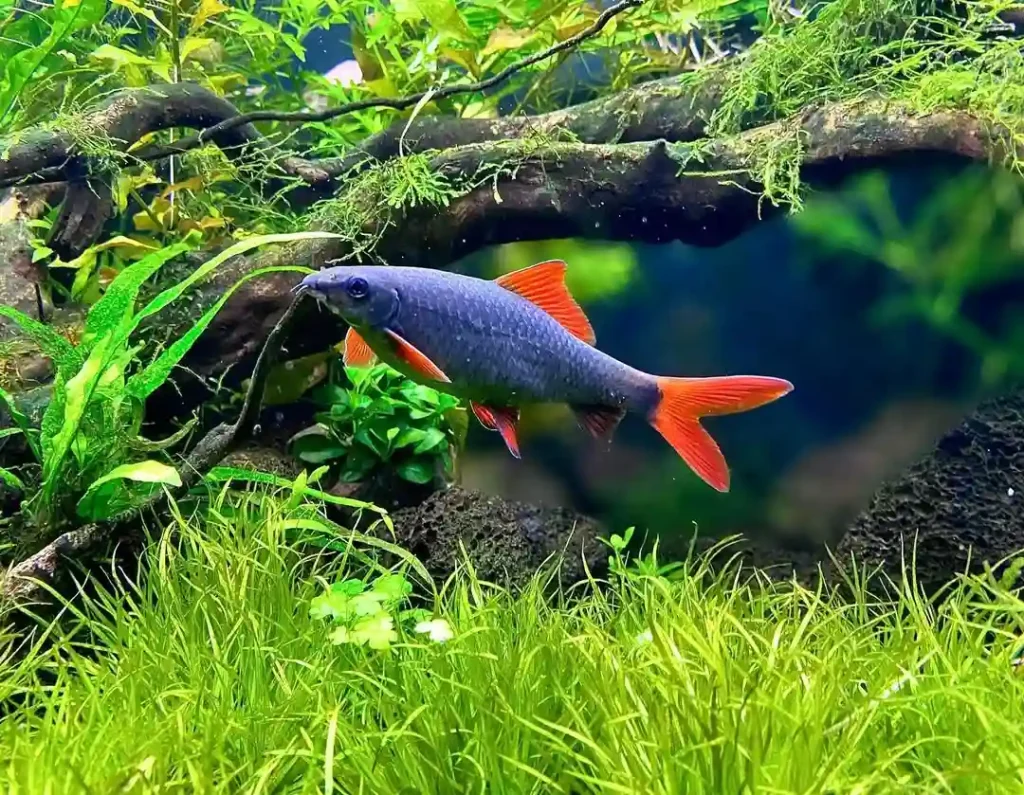
What Is a Rainbow Shark?
Rainbow Sharks (Epalzeorhynchos frenatum) are not true sharks, but they do have a torpedo-shaped body and upright dorsal fin that gives them their name. These fish are native to the rivers of Southeast Asia and are popular for their bold look and active behavior.
Quick Facts:
- Size: Up to 6 inches
- Lifespan: 5–8 years
- Temperament: Semi-aggressive
- Swimming Level: Bottom and mid-water
- Ideal For: Intermediate aquarists
Want more colorful fish? Visit our Colorful Freshwater Fish Guide
Rainbow Shark Tank Setup
Minimum Tank Size
A 55-gallon tank is the absolute minimum for one Rainbow Shark. These fish are active swimmers and highly territorial. A cramped tank increases stress and aggression.
If you plan to keep other fish, a 75-gallon or larger tank is safer.
Water Parameters
| Parameter | Ideal Range |
| Temperature | 72–80°F (22–27°C) |
| pH | 6.5–7.5 |
| Hardness | 5–11 dGH |
Use a reliable heater and test water weekly to maintain stability.
Filtration and Flow
Rainbow Sharks prefer clean, oxygen-rich water with some current. Use a canister filter or a well-maintained hang-on-back filter. Adding an airstone helps boost oxygen levels.
Need setup help? See our Freshwater Aquarium Setup Guide
Substrate and Décor
- Use soft gravel or sand for substrate
- Add rocks, caves, and driftwood to create hiding spots
- Include live or artificial plants along the sides—leave the center open for swimming
- Avoid sharp edges that may injure their fins
Rainbow Shark Behavior
Rainbow Sharks are known for their territorial behavior, especially as they mature. While they’re not typically violent, they will chase and harass tank mates that invade their space.
They’re most active during the day and spend a lot of time patrolling the bottom of the tank. You may also notice them hiding under décor or behind filter equipment.
To reduce aggression:
- Provide plenty of cover
- Avoid adding similar-shaped fish
- Don’t overcrowd the tank
What Do Rainbow Sharks Eat?
Rainbow Sharks are omnivores, meaning they eat both plant matter and protein-rich foods.
Best Foods:
- Algae wafers
- Spirulina-based pellets
- Blanched veggies like zucchini, cucumber, or spinach
- Bloodworms, brine shrimp (as treats)
Feeding Tips:
- Feed them once or twice a day
- Offer enough food they can eat in under 2 minutes
- Remove any leftovers to maintain water quality
Rainbow Shark Tank Mates
Choosing the right tank mates is key to keeping a Rainbow Shark in a community setup.
Compatible Tank Mates:
- Barbs (like Tiger Barbs)
- Rainbowfish
- Danios
- Larger Gouramis (Pearl or Three-spot)
These fish are fast enough to avoid harassment and tend to swim in the mid-to-upper levels of the tank, which reduces direct competition.
Avoid These:
- Other Rainbow Sharks
- Red Tail Sharks
- Bala Sharks
- Angelfish, Bettas, and slow-moving fish
- Shrimp or tiny invertebrates
Browse our Community Fish List for more ideas.
Breeding Rainbow Sharks at Home

Breeding Rainbow Sharks in home aquariums is extremely rare. Most Rainbow Sharks sold in stores are bred commercially using hormone injection methods.
Still, if you’re curious, here’s what it would take.
Conditions for Breeding:
- Tank size of 100 gallons or more
- Several hiding spots and visual barriers
- Slightly warmer water (78–80°F)
- Soft, slightly acidic water (pH 6.5–7.0)
Male and female Rainbow Sharks are hard to distinguish. If a pair spawns, the female lays adhesive eggs on flat surfaces or plants.
Raising Fry:
- Remove the adults after spawning
- Feed fry with liquid fry food or infusoria
- Gradually introduce baby brine shrimp as they grow
Most hobbyists don’t attempt breeding due to the low success rate and complex requirements.
Common Rainbow Shark Health Issues
Rainbow Sharks are hardy when kept in the right environment, but they can still experience issues related to stress and poor water quality.
Potential Problems:
- Ich (white spots)
- Fin rot
- Fungal infections
- Aggression-related injuries
Prevention Tips:
- Keep up with water changes (20–30% weekly)
- Maintain stable water parameters
- Feed a varied diet
- Avoid overstocking
Are Rainbow Sharks Right for You?
Rainbow Sharks are a great choice for intermediate aquarists who want a colorful, active, and slightly challenging species. They’re best for solo setups or semi-aggressive tanks with plenty of space and structure.
Good fit if you:
- Have a 55+ gallon tank
- Like active fish with bold personalities
- Can manage semi-aggressive behavior
- Don’t plan to keep shrimp or delicate species
FAQs
Can Rainbow Sharks live alone?
Yes. In fact, they often do better that way due to their territorial behavior.
Are Rainbow Sharks algae eaters?
They will graze on algae but should not be relied on for algae control. Supplement with wafers and greens.
Do Rainbow Sharks bite or attack?
They rarely bite, but they do chase and stress other fish—especially if they look similar.
How can I tell if a Rainbow Shark is male or female?
Males are usually slimmer with more vivid colors, but it’s difficult to sex them accurately without breeding behavior.
Do Rainbow Sharks jump out of the tank?
Yes, they can jump. A secure lid is a must.
Final Thoughts
Rainbow Sharks bring a striking look and unique personality to freshwater aquariums, but they aren’t the right fit for every tank. With the right setup, tank mates, and care routine, they can thrive for many years and become a standout in your aquatic collection.

